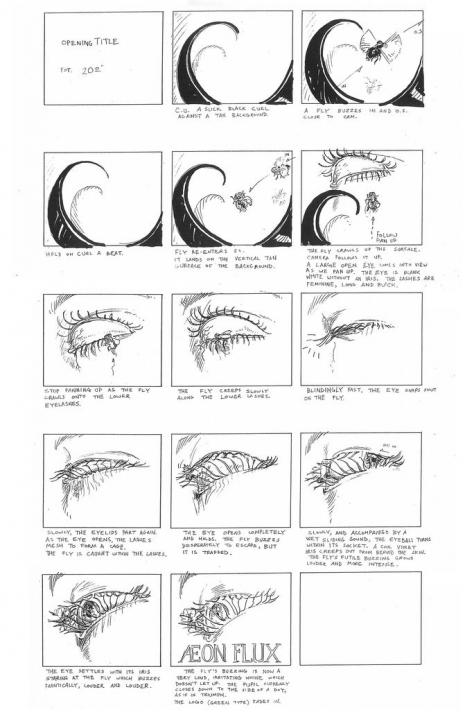
The run of Aeon Flux on MTV in the early 1990s coincided with a period in my life when I was living abroad, but whenever I was stateside I would scarf down as many episodes as I could manage. The show looked and sounded like nothing else, something that continues to be true to this day, and seemed to resist regular plot continuity to an almost mind-blowing extent—at least I never watched it with any expectation that there was an intelligible “plot” that could be “followed.” Considering that all of the early shorts—seen initially on MTV’s experimental animation anthology Liquid Television—culminated in the eponymous protagonist’s repeated demise, it’s safe to say that narrative coherence was largely beside the point.
Aeon Flux (actually Æon Flux, right?) was the kind of show that was probably pilloried for being “pretentious” and self-serious but actually strikes me as a perfect expression of a certain variety of dry wit—if this sequence from “Tide” doesn’t make you grin at any point, you’re probably not paying close enough attention. One needn’t have been aware of the existence of the cyberpunk genre to intuit it from any random scene from the show, which also evinced an interest in fetishism and domination to an extent that was rare for a TV show in the 1990s. Every character looked like an emaciated Egon Schiele subject, and occasionally a spindly albino would materialize and lick someone’s earhole.
Aeon Flux was the brainchild of Peter Chung, a Korean-American CalArts grad who cut his teeth under Ralph Bakshi and also at Disney. A couple of weeks ago he participated an interview with The Art of the Title, in which he pointed to The Prisoner and the claire ligne style of Hergé and Moebius as key influences. It’s well worth a read. In the piece one of the items of visual collateral is the storyboard for the “Venus eyetrap” sequence, probably the most familiar visual element from the series.
On Deviantart, one can find nine further storyboards from artist Mike Jackson, who worked on “The Purge” and “A Last Time for Everything” late in the series’ run.
Having recently consumed several clips on YouTube, I’d like to offer the insight that dialogue almost always violated the show’s essence—the best sequences are as wordless as Harpo Marx. The entire series is available at Amazon for less than $20.


More production art from Aeon Flux after the jump…...





